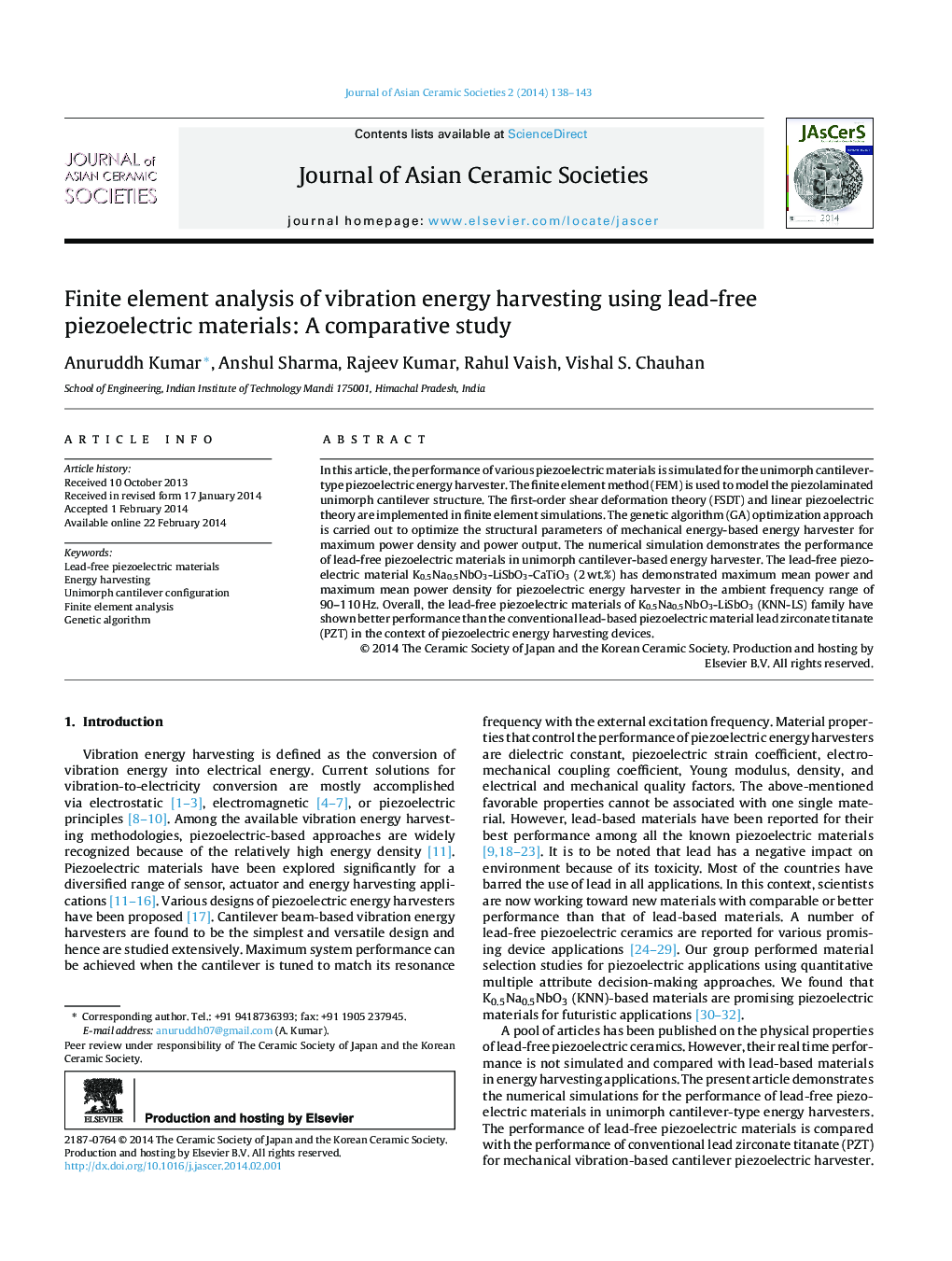| Article ID | Journal | Published Year | Pages | File Type |
|---|---|---|---|---|
| 1473391 | Journal of Asian Ceramic Societies | 2014 | 6 Pages |
In this article, the performance of various piezoelectric materials is simulated for the unimorph cantilever-type piezoelectric energy harvester. The finite element method (FEM) is used to model the piezolaminated unimorph cantilever structure. The first-order shear deformation theory (FSDT) and linear piezoelectric theory are implemented in finite element simulations. The genetic algorithm (GA) optimization approach is carried out to optimize the structural parameters of mechanical energy-based energy harvester for maximum power density and power output. The numerical simulation demonstrates the performance of lead-free piezoelectric materials in unimorph cantilever-based energy harvester. The lead-free piezoelectric material K0.5Na0.5NbO3-LiSbO3-CaTiO3 (2 wt.%) has demonstrated maximum mean power and maximum mean power density for piezoelectric energy harvester in the ambient frequency range of 90–110 Hz. Overall, the lead-free piezoelectric materials of K0.5Na0.5NbO3-LiSbO3 (KNN-LS) family have shown better performance than the conventional lead-based piezoelectric material lead zirconate titanate (PZT) in the context of piezoelectric energy harvesting devices.
